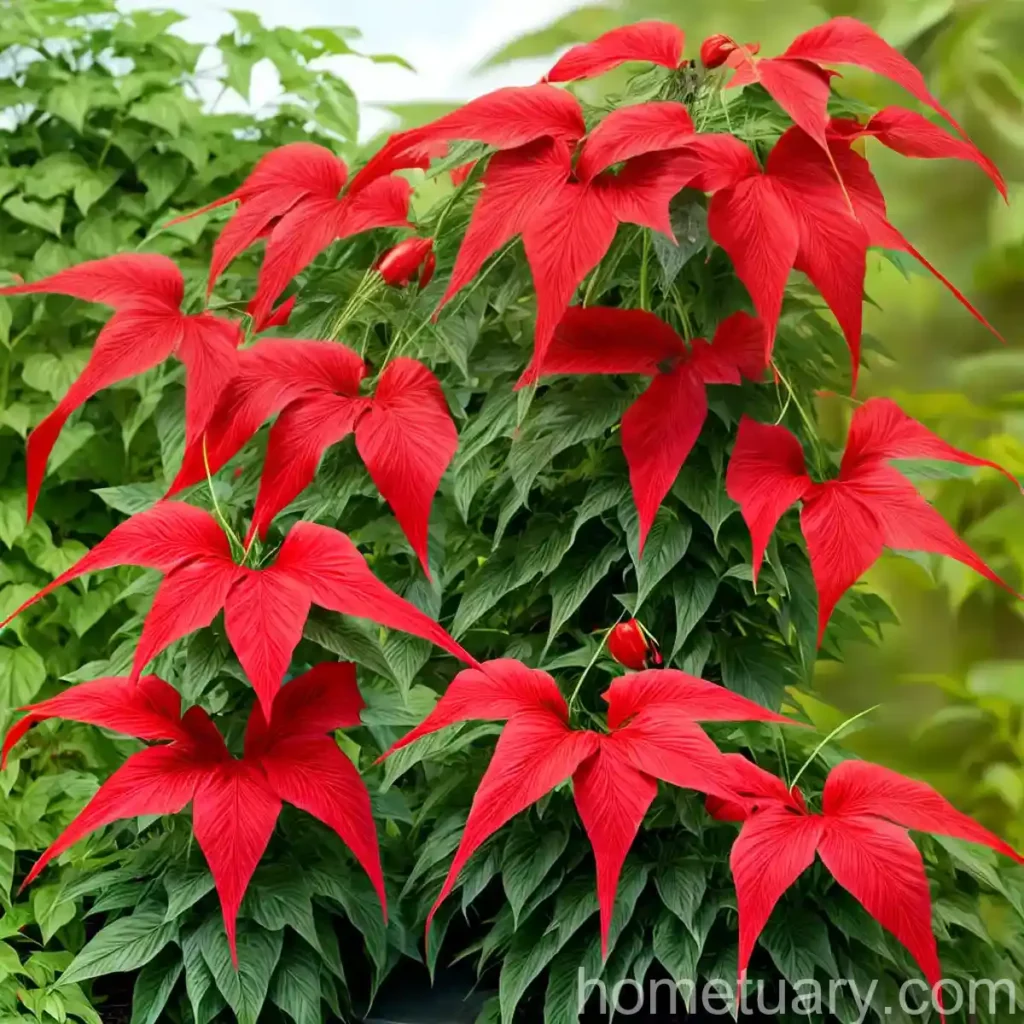The Cardinal Climber (Ipomoea x sloteri): A Comprehensive Guide
In the world of horticulture, the cardinal climber (Ipomoea x sloteri) has gained a special place due to its vibrant red flowers and its ability to attract hummingbirds and butterflies. This climbing vine has become a favorite amongst gardeners, both beginners and experienced alike. In this comprehensive guide, we will explore the various aspects of the cardinal climber, from its cultivation and care to its cultural significance and ecological importance.
What is the Cardinal Climber (Ipomoea x sloteri)?
The cardinal climber, scientifically known as Ipomoea x sloteri, is a captivating flowering vine that belongs to the Convolvulaceae family. It is a hybrid species resulting from a cross between Ipomoea quamoclit and Ipomoea coccinea. This ornamental vine is cherished for its heart-shaped leaves and trumpet-shaped flowers that bloom in a striking shade of cardinal red, hence its common name “cardinal climber”. The vigorous growth and the ability to cover trellises and arbors make it a popular choice for vertical gardening and landscape design.
Key Takeaways – Cardinal Climber (Ipomoea x sloteri)
Before delving into the details of growing and caring for the cardinal climber, let’s highlight the key takeaways of this plant.
- Scientific Name: Ipomoea x sloteri
- Common Names: Cardinal climber, Cypress vine cardinal, Hummingbird vine
- Plant Type: Annual Vine
- Foliage: Heart-shaped, green leaves
- Flowers: Bright red trumpet-shaped flowers
- Sunlight Needs: Full sun to partial shade
- Watering: Moderate
- Soil Type: Well-draining, fertile soil
- Uses: Vertical gardening, landscape design, attracting pollinators
Culture
The cardinal climber is fairly easy to culture and does well in a variety of settings. Understanding its cultural requirements is essential for ensuring optimal growth and vibrant blooms.
Uses
The cardinal climber holds a special place in horticulture due to its versatile uses, including:
- Vertical Gardening
- Landscape Design
- Attracting Pollinators
- Accentuating Fences and Arbors
Water
Proper watering is crucial for the health and vigor of the cardinal climber. While it is relatively drought-tolerant, consistent moisture is vital for robust growth and abundant flowering.
Sunlight
The cardinal climber thrives in full sun to partial shade. Adequate sunlight is essential for promoting flowering and ensuring lush foliage.
Fertilizer
Feeding the cardinal climber with a balanced, soluble fertilizer can significantly enhance its growth and blooming potential. A 10-10-10 fertilizer applied every 4-6 weeks during the growing season can provide the necessary nutrients for healthy development.
Soil
The cardinal climber flourishes in well-draining, fertile soil. A soil mix enriched with organic matter can provide the ideal growing medium for this vigorous vine.
Pruning
Pruning the cardinal climber is essential for maintaining its shape, controlling its growth, and promoting abundant flowering. Regular removal of spent flowers and occasional shaping can help keep the plant looking tidy and promote new growth.
Propagation
The cardinal climber can be propagated through both seeds and cuttings. The process of propagation depends on the desired method and the availability of plant material.
Container Popularity
As a versatile ornamental vine, the cardinal climber is popular for container gardening due to its ability to thrive in confined spaces. Its cascading growth habit and radiant flowers make it a stunning addition to container gardens and hanging baskets.
Common Diseases
While the cardinal climber is relatively resistant to diseases, it can occasionally be affected by certain issues that may hinder its growth and vitality.
Disease Diagnosis
Keep an eye out for common fungal diseases such as powdery mildew and leaf spot. Adequate air circulation, proper watering practices, and diligent monitoring can help prevent and manage these issues effectively.
Common Pests
Pests such as aphids and spider mites may occasionally infest the cardinal climber. Regular inspection and the use of organic pest control methods can help keep these pests at bay and protect the plant from damage.
Botanist’s Tips
For a plant enthusiast, understanding the nuances of the cardinal climber’s growth and care can lead to a more fulfilling gardening experience. Here are some valuable tips to consider while cultivating this vibrant vine:
- Provide a sturdy trellis or support for the cardinal climber to climb and sprawl.
- Incorporate companion plants such as lantana and salvia to attract a diverse range of pollinators.
- Utilize well-draining containers for growing the cardinal climber in confined spaces such as balconies or patios.
Fun Facts
- The cardinal climber is a magnet for hummingbirds due to the nectar-rich flowers and vibrant coloration.
- In addition to its ornamental value, the cardinal climber has been used in traditional medicine for its potential medicinal properties.
Links to External Resources
For further in-depth information on the cardinal climber and its cultivation, refer to the following resources:
- Cardinal Climber Plant Care Guide
- Growing Cardinal Climber from Seeds
- Cardinal Climber for Vertical Gardening
With the comprehensive insights provided in this guide, gardening enthusiasts can embark on a rewarding journey of cultivating and caring for the charismatic cardinal climber. Whether it adorns a vertical garden, flourishes in a container, or graces a landscape with its vibrant presence, the cardinal climber continues to captivate both gardeners and nature enthusiasts with its striking beauty and ecological significance.















